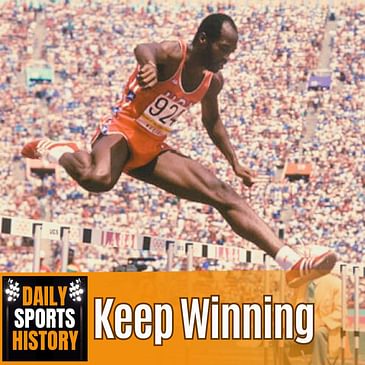Join us on Daily Sports History as we celebrate the incredible career of hurdling icon Edwin Moses. Explore his dominance in the 400m hurdles, his unbeaten streak, and the impact he had on the sport. Discover the story of an athlete who redefined what it means to be a champion.
#DailySportsHistory, #EdwinMoses, #HurdlingLegend, #TrackAndField, #SportsHistory, #Athletics, #SportsPodcast, #Champion, #UnbeatenStreak, #OlympicHistory



